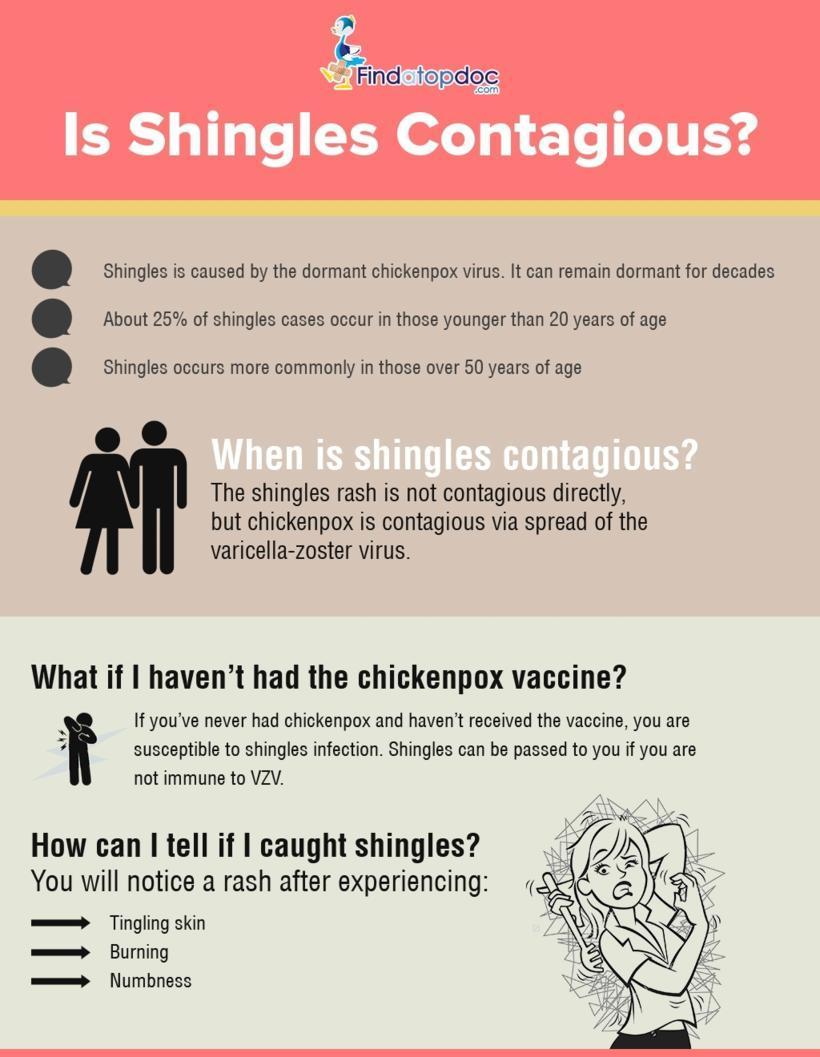
Shingles is a painful viral infection and can occur in anyone who has at one time had chickenpox. The varicella zoster virus remains inactive in the nerve tissue close to the spinal cord and brain awaiting reactivation. Every year in the United States, over 1 million people will be affected by the herpes zoster virus, also known as shingles. Over one half of shingles cases affect people over 60 years old. Although the viruses behind shingles are part of the herpes virus family, they are not the same viruses that cause genital herpes and cold sores.
How is shingles spread?
Many people with shingles wonder if they are contagious. While the varicella zoster virus can be spread to those who have not had chickenpox, shingles itself cannot.
This transmission, which only occurs through direct contact with blisters, would cause chickenpox in someone who has never been infected with the virus. During the times before blisters and after crusting, there is no risk of viral transmission.
Ways to prevent viral transmission include:
- Covering the rash and avoiding touching it
- Practicing good hand hygiene by frequently washing both hands
- Avoiding coming into contact with certain people after blisters have formed
People to avoid after blisters have formed include:
- Pregnant women who have never had chickenpox or received the shot for it
- Infants born early or those of low birth weight
- People with weakened immune systems
People with weakened immune systems includes those on immunosuppressive medications, chemotherapy, those with HIV, and those who have had an organ transplant.
Signs and symptoms of shingles
People who develop shingles can experience the following symptoms:
- A one-sided stripe of blisters wrapping around the side of the torso, body, or face
- Pain, which can be intense at times
- A widespread rash
- Rash in the eye
- Fluid-filled blisters that scab within 7-10 days and resolve within 2-4 weeks
- Fever
- Headache
- Chills
- Upset stomach
- Sensitivity to touch or light
- Itching
- Tiredness
Many people who are affected will experience pain, itching, or tingling at the site of the rash around 1-5 days before the shingles outbreak. A rash and pain may not be present during some outbreaks.
Risk factors associated with Shingles
There are certain people who are at a higher risk for developing shingles:
- People with weakened immune systems from conditions such as HIV, leukemia, or lymphoma
- People who are treated with medications that suppress the immune system
- People who are taking medications after receiving a transplant
- People who have had chickenpox
- People who are over 50 years old
People should speak to a doctor about any risk factors that they may be worried about. The doctor may be able to give advice on how to reduce the risk.
Living with a shingles rash can be made more comfortable by taking steps to relieve the symptoms. Keeping any rashes clean and dry helps to reduce the risk of them becoming infected. Wearing loose clothing can also help people to feel less uncomfortable while waiting for a rash to clear.


